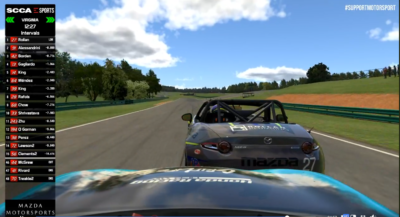When visiting a circuit for the first time, there are many resources to learn from before you unload the car. We started this topic by sharing, “Driving Tip #9: Learning New Tracks.” Now are building on it by turning to other pro drivers and coaches.
There is no excuse for arriving unprepared at a track, especially if you’re seeing for the first time. Even in the pre-Internet days, you could usually find a track description, maybe even an expert to talk you around the circuit. Now, though, there are many online videos of every track, plus most tracks can be found in some kind of sim racing. The resources are there, but getting the best use of them isn’t always easy.
“The scanning technology is really amazing nowadays,” says Joel Miller, pro driver and coach. Miller goes on to say that you’re better off if you can sim-drive the track in a car similar to what you’ll be racing, but it’s not an absolute necessity. “You might be in the sim in a Pro Mazda car, for example, or a Miata, and you’re driving something different. But because the scanning and the visuals are so accurate, you can really figure out where to place your car and among much more. Until you actually get in the real race car, you won’t be 100 percent ready for the track. But, the sim is going to allow you to pick up the visuals; allow you to pick up the bumps in the track; and get rough brake estimates. That’s what I use it for.”
Tristan Nuñez, driver of the No 55 RT-24P in the WeatherTech Championship, is a huge advocate of sims – no surprise given that the young racer has grown up in the age of some good racing simulation programs and equipment. He’s particularly a fan of iRacing, which has even sent drivers to the Mazda Road to 24 Shootout, including 2015 winner and Idemitsu MX-5 Cup competitor Glenn McGee.
“They pretty much have all the tracks that you can think of,” Nuñez says. “That’s the best way to practice those techniques of trailing off the brakes. You’re not going to get the exact same feeling as you’re going to get in your car, but there are certain techniques that are going to carry over.”
In short, you’re going to arrive at the track with a good idea of braking points and lines if you drive it in the sim first, especially if you can do it in a car similar to what you’ll be driving. But not every track is in the simulations; some club tracks, or some configurations of club tracks, may not be available in your favorite sim. But odds are high that someone has driven that track and posted a video online.
Tom Long, pro driver and coach, warns that there are pitfalls to watching videos on YouTube or similar video sharing services. First, the car may be radically different – watching a P1 car when you’re driving a B-Spec Mazda2 may help, but it’s going to give you a skewed version of the track – not only in speed, but in eye-level viewpoint. Second, you need to be sure the driver who uploaded the video knows how to drive; the best hint to that may be in race results, or if the lap time matches top drivers in the class. Video can be a useful tool if you make sure it’s relevant.
“If you can have a video that’s going to be specific to the type of car that you’re going to drive, looking at things like where is this driver braking, so you’re looking at brake points, you’re looking at the gears, some of the basics. Then there are some subtleties you can pick up on – how do they bend the car into the corner? Is it a quick corner where they’re turning in quickly, or is it slow hands. For me, what I usually think about is…what gear the corner needs to be, and where do you brake for the big brake zones. That’ll get you pretty close, because as a racer, you kind of understand – if you can figure out braking points, brake release points, rolling the right amount of speed, and where to pick up the throttle, the line will kind of take care of itself.”
Watching is good; memorizing is better. “If you have done many laps watching video, then start to play it in your head and see if you can start to put it together. More than memorize – start to put some details and overall plan for the course together; know how you want to approach particular parts of the track,” Long adds.
Do your homework the right way, and you’ll find there’s less work to do when you pull the car off the trailer at a new circuit.
